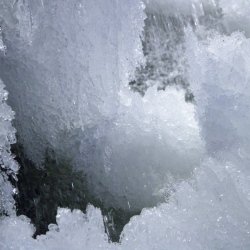
It might seem curious that the closest planet to the Sun, where temperatures soar above 400C, could host water-ice.But some of the craters on this hothouse world are always shadowed from the Sun, turning them into cold traps. Using very low levels of light scattered off crater walls, scientists were able to build up a picture of what these frozen deposits look like.
The work, by researchers involved with Nasa’s Mercury Messenger mission, has been published in the journal Geology. Scientists suggested decades ago that water ice might be trapped in shadowed areas near the planet’s poles. Then, in the 1990s, data from the Arecibo radio telescope in Puerto Rico revealed areas that strongly reflect radar – a characteristic of ice.
Many of these corresponded to the locations of large impact craters mapped by the US spacecraft Mariner 10 in the 1970s. After the Messenger probe entered orbit around the planet in March 2011, it deployed a range of techniques to show that there are probably several billion tonnes of water ice locked up at the north pole. In the latest study, Dr Nancy Chabot and colleagues studied an impact crater called Prokofiev, the largest such depression at the planet’s north pole.
